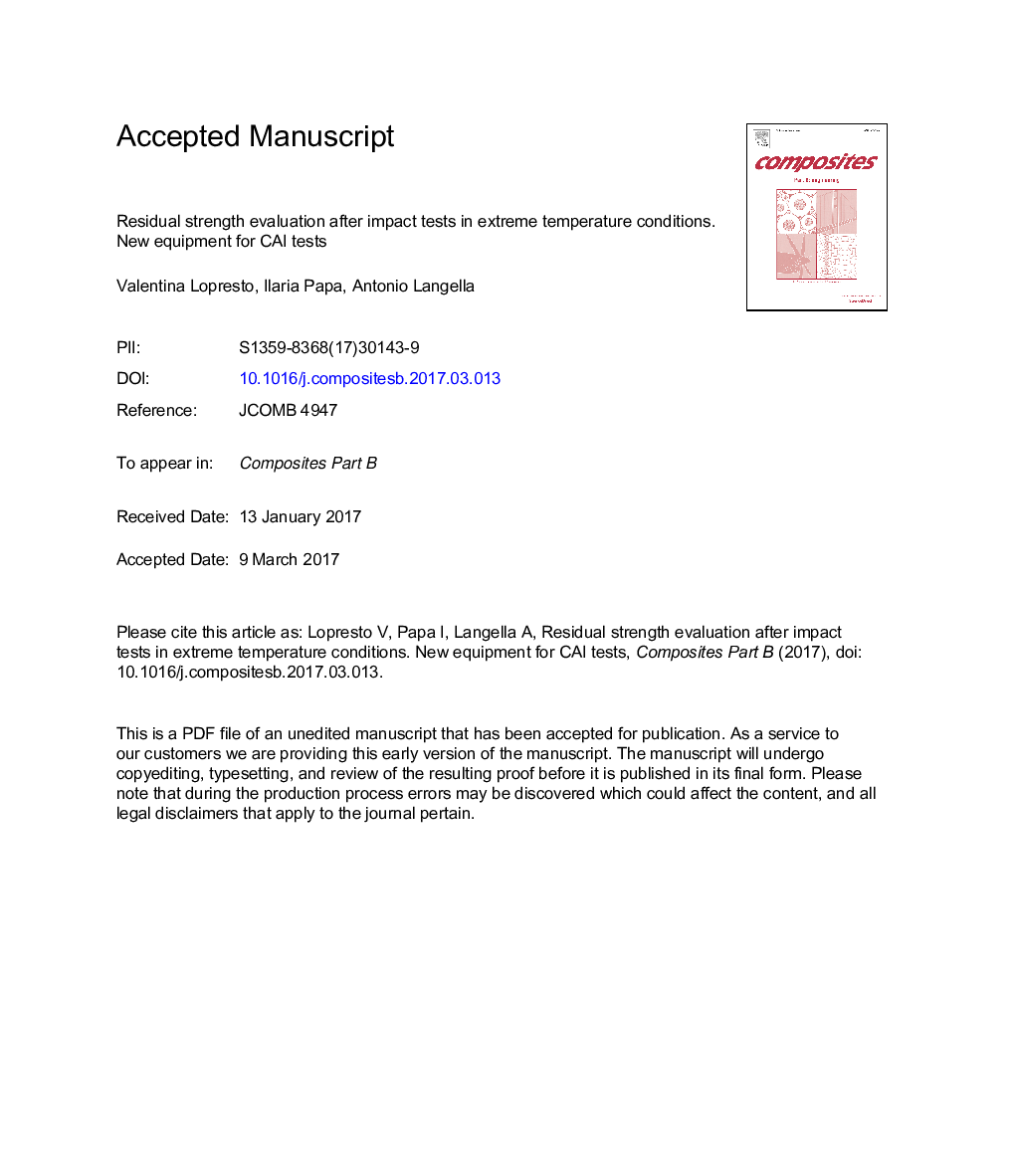| Article ID | Journal | Published Year | Pages | File Type |
|---|---|---|---|---|
| 5021185 | Composites Part B: Engineering | 2017 | 18 Pages |
Abstract
A large experimental campaign has included low velocity falling weight tests at room and low temperatures, on carbon fibre laminates in vinylester resin, clamped following the EN6038 or ASTMD7136 Standards, or simply supported by a water pillow. The latter clamping device was used to differently distribute the load and to investigate about the influence of the water backing. The mechanics-based understanding of the fluid-structure interaction occurring during the impact, was devoted to understand the role of water-backing on the loading experienced by the panel, toward informing the interpretation of empirical observations and design of new experiments. Non destructive and destructive evaluations for damage investigations were carried out whereas the design and the production of a new, more simple and reliable Compression After Impact (CAI) apparatus, was described and adopted to avoid errors due to misalignment between the applied load and the specimen. CAI tests were then, performed to evaluate the residual compression strength. Analytical and semi empirical models were evaluated and validated to predict the influence of the geometric parameters on the impact behaviour of the laminates. The final aim was to predict the impact energy, delamination and residual strength, in the different test conditions.
Related Topics
Physical Sciences and Engineering
Engineering
Engineering (General)
Authors
Valentina Lopresto, Ilaria Papa, Antonio Langella,
